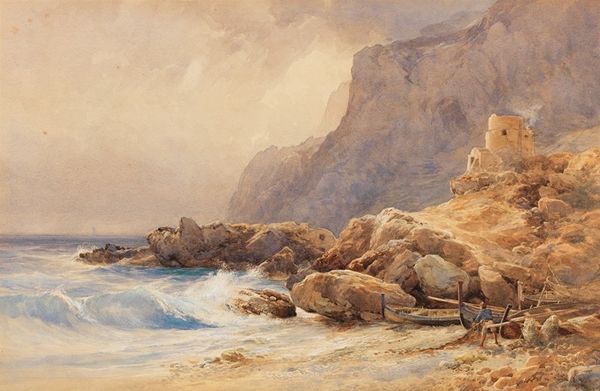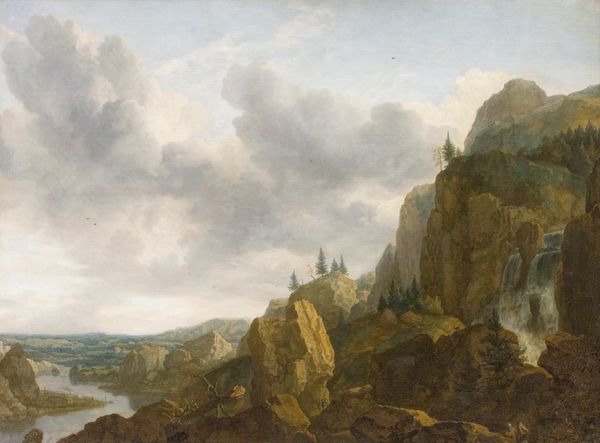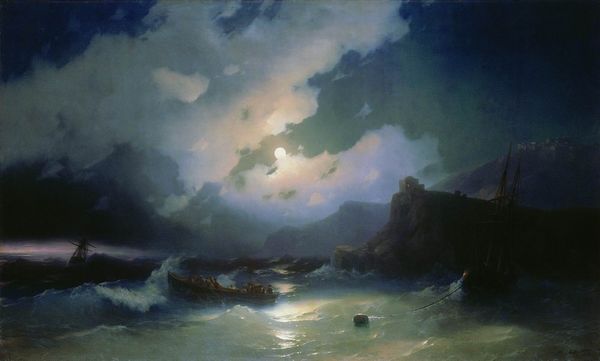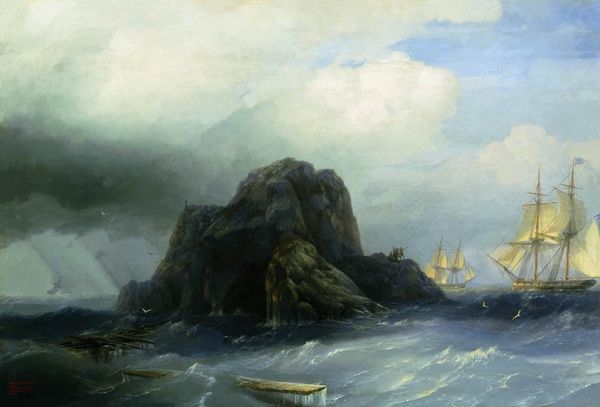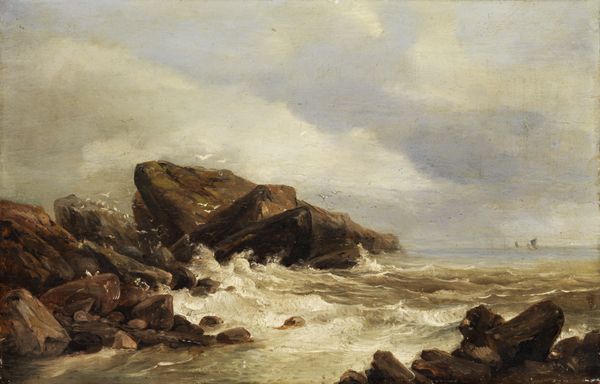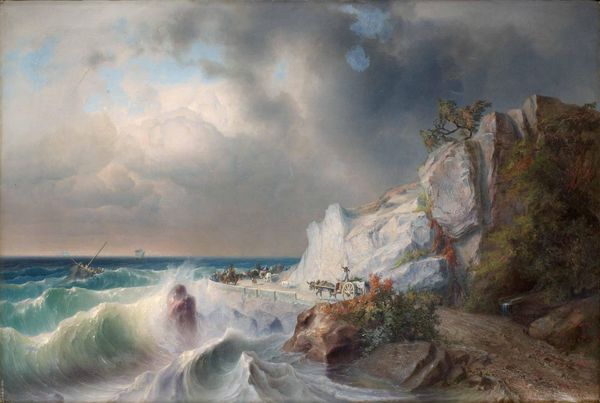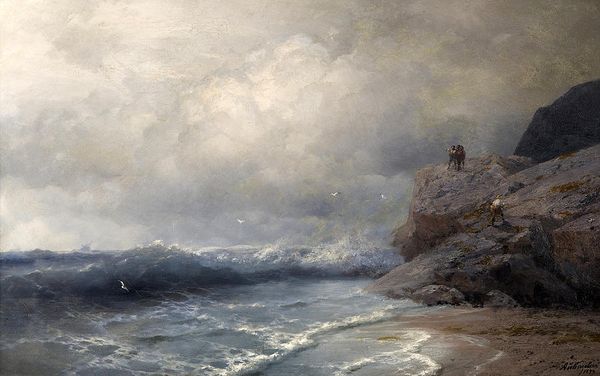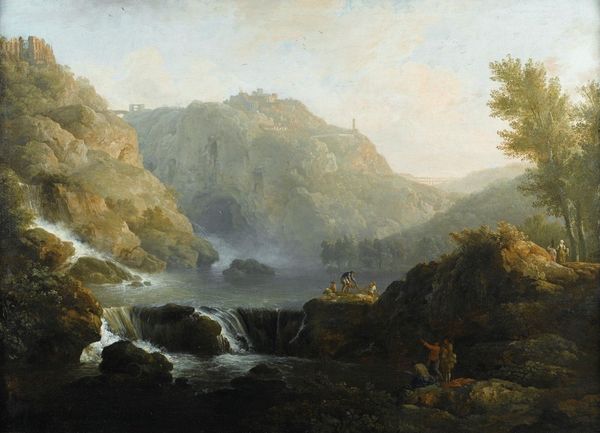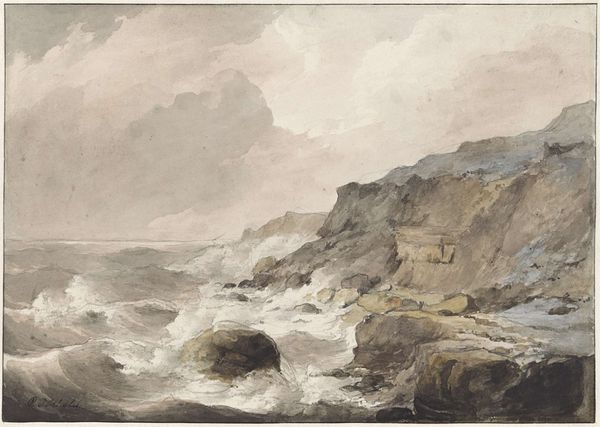
Dimensions: height 37 cm, width 47 cm, depth 3.5 cm
Copyright: Rijks Museum: Open Domain
Editor: This oil painting, "A Rocky Coast" by Andreas Schelfhout, was completed in 1852. The muted color palette and rough seascapes give it a dramatic, almost melancholy feel. How do you interpret this work? Curator: Immediately, I am drawn to the symbol of the cross perched atop the rocks. It seems almost a deliberate marker against the vastness of the sea and sky, hinting at themes of faith or perhaps even loss and remembrance. It whispers to a time when symbols held more public meaning, a shared visual language. What feelings does the cross evoke for you within this landscape? Editor: I hadn't considered that! To me, it felt more like a forgotten landmark, abandoned on the coast. I was focused on the natural scene. Curator: It’s interesting that you read "abandonment" because the cross in many Northern European paintings often connects the transience of human life to the permanence of nature, like a spiritual anchor in the face of worldly instability. The sea itself is a potent symbol: historically a boundary, but also a gateway to new lands, to the unknown, carrying so much emotional weight. Does the composition tell you anything about its relation? Editor: Yes, I suppose the high vantage point combined with the rough waves gives it a slightly overwhelming feeling, it almost makes me feel small. The small figures walking near the cliffs reinforces that idea. Curator: Exactly. Consider, too, the Romantic movement's emphasis on the sublime—the powerful and overwhelming forces of nature dwarfing human endeavors. Schelfhout invites us to consider humanity’s place within that grand, often indifferent, design, and the emotional and spiritual implications of such insignificance and integration. Editor: I now have a greater understanding of how symbolism and composition combine to tell a story within the painting. Thanks! Curator: Likewise, your insights are important when reminding us of shifting contextual meanings.
Comments
No comments
Be the first to comment and join the conversation on the ultimate creative platform.


